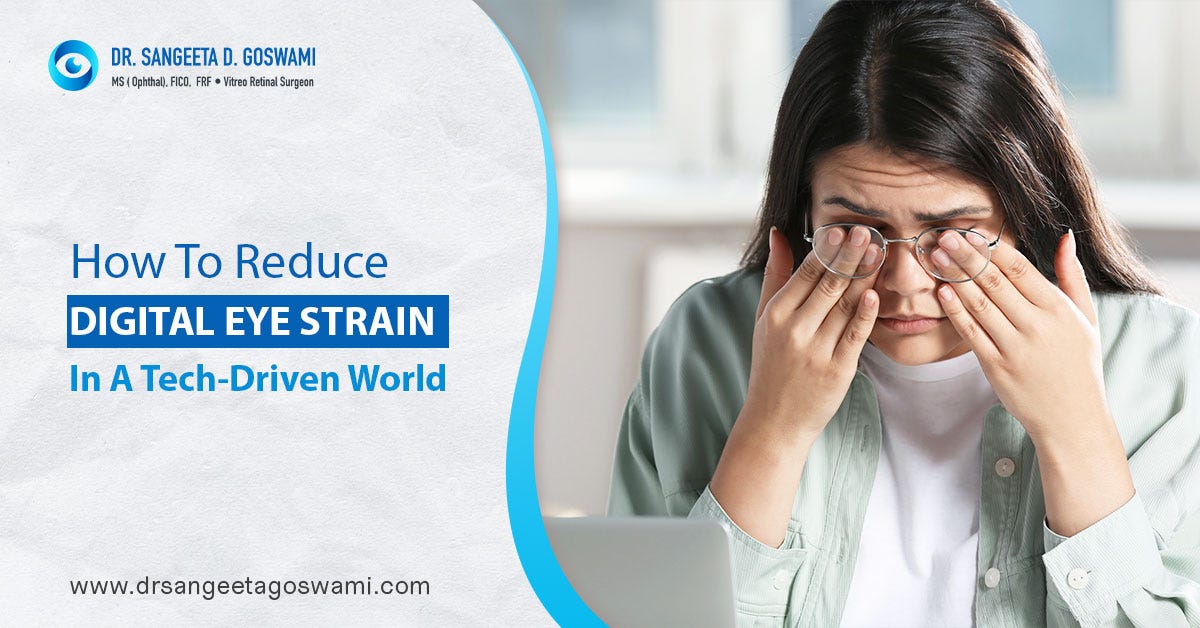Reducing Digital Eye Strain in a Tech-Driven World: A Guide to Healthy Vision

Introduction
In today’s tech-driven world, we’re constantly surrounded by screens, from smartphones to laptops and televisions. This increased exposure to digital devices has led to a rise in digital eye strain, a condition characterized by eye fatigue, dryness, and irritation. According to a study by the American Academy of Ophthalmology, 60-90% of people experience digital eye strain after using computers for more than two hours. In this article, we’ll explore the causes and effects of digital eye strain, and provide actionable tips on how to reduce its impact on your vision.
What is Digital Eye Strain?
Digital eye strain occurs when the eyes are subjected to prolonged periods of intense visual demands, causing fatigue, dryness, and irritation. This can manifest in a range of symptoms, including:
- Eye fatigue and strain
- Dry or irritated eyes
- Blurred vision
- Headaches or migraines
- Difficulty focusing
- Red or itchy eyes
Causes of Digital Eye Strain
Several factors contribute to the development of digital eye strain, including:
- Prolonged screen time: Spending extended periods in front of screens, such as computers, smartphones, or televisions, can lead to eye strain.
- Incorrect display settings: Poor screen brightness, contrast, and resolution can cause eye strain and fatigue.
- Poor posture: Working or viewing screens with poor posture can lead to eye strain, headaches, and back pain.
- Insufficient breaks: Failing to take regular breaks from screens can cause eye strain and fatigue.
- Dry air: Sitting in an environment with dry air can contribute to eye dryness and irritation.
- Poor lighting: Working in an environment with inadequate lighting can cause eye strain and discomfort.

Reducing Digital Eye Strain: Tips and Strategies
Fortunately, there are many simple and effective ways to reduce digital eye strain and protect your vision:
- Follow the 20-20-20 Rule: Every 20 minutes, look away from your screen and focus on something 20 feet away for 20 seconds.
- Adjust your display settings: Ensure the brightness and contrast of your screen are comfortable for your eyes.
- Position your screen correctly: Place your screen directly in front of you, at a comfortable distance, and at a slightly downward angle.
- Blink regularly: When working on a computer, remember to blink regularly to prevent dry eyes.
- Take regular breaks: Schedule regular breaks from screens, ideally every 60 minutes, to rest your eyes and stretch your body.
- Use good lighting: Ensure the room is well-lit, but avoid harsh or direct sunlight.
- Consider blue light filtering glasses: Blue light from screens can contribute to digital eye strain; wearing blue light filtering glasses can help mitigate this effect.
- Stay hydrated: Drink plenty of water to keep your eyes and body hydrated.
- Get regular eye exams: Regular eye exams can help detect eye problems, including digital eye strain.
Preventing Digital Eye Strain in Your Daily Life
While the above tips and strategies can help mitigate digital eye strain, it’s also essential to adopt a proactive approach to eye care in your daily life:
- Wear protective eyewear: When using power tools or engaging in activities that may expose your eyes to debris or dust, wear protective eyewear.
- Get enough sleep: Aim for 7-9 hours of sleep per night to help your eyes and body recover from the demands of the day.
- Eat a balanced diet: A diet rich in omega-3 fatty acids, vitamins A and E, and other essential nutrients can help support eye health.
- Exercise regularly: Regular exercise can help improve eye health and overall well-being.
Digital Eye Strain in Children and Adolescents
Children and adolescents are particularly vulnerable to digital eye strain due to their developing eyes and excessive screen time. Parents and caregivers can take the following steps to protect their child’s vision:
- Establish screen-free zones: Designate screen-free areas in the home, such as the dinner table or bedrooms.
- Set screen time limits: Establish limits on screen time, and encourage physical activity and outdoor play.
- Monitor eye health: Regular eye exams can help detect eye problems, including digital eye strain, in children.
Digital Eye Strain in the Workplace
Digital eye strain can also have significant implications in the workplace, leading to reduced productivity, lost work time, and decreased job satisfaction. Employers and employees can take the following steps to mitigate digital eye strain in the workplace:
- Provide eye care education: Educate employees about the risks of digital eye strain and the importance of eye care.
- Implement eye care policies: Establish policies and procedures to encourage regular eye exams, adequate breaks, and proper lighting.
- Provide eye-friendly workstations: Design workstations with comfort and eye health in mind, including adequate lighting and proper seating.
Conclusion
Digital eye strain is a significant concern in today’s tech-driven world, but there are many simple and effective ways to mitigate its impact on your vision. By following the tips and strategies outlined in this article, you can reduce your risk of digital eye strain and protect your vision for years to come. We urge you to share this article with friends and family, and join the conversation on social media using #HealthyVision2024.
Let’s work together to create a more responsible and eye-friendly digital world!

